|
Dakar, the sprawling capital, is a hub of commerce, culture, and relentless energy. There, modern high-rises stand near colonial-era buildings, and international businesspeople share the streets with informal vendors selling everything from mangoes to phone credit. Employment in Senegal's cities often falls into two categories; the formal sector (government, NGOs, corporate offices) and the much larger informal sector. The latter is the engine of the urban economy, where millions make a living as taxi drivers, artisans, street food vendors, and small-scale merchants. Homes in urban areas range from luxurious villas in affluent neighbourhoods to modest concrete-block apartments and the densely packed, often precarious, housing of the city's sprawling suburbs. While cities offer greater access to education and healthcare, they also present challenges like traffic congestion, overcrowding, and sanitation issues.
Normally around one thousand people live in each Senegal village with traditional housing made from mud bricks with wooden roofs entwined with millet stalks, or more modern homes from mud-brick or concrete. Both are normally decorated with numerous family photographs given they are home to multiple generations of a family; often ten people living within a compound shared with various animals from goats, sheep, chickens and cows. Senegal has the highest population of polygamous marriages in West Africa with most men having more than one wife, and the male will spend time with each of them and their children with household tasks being rotated amongst the women. After completing their household tasks, the women of the family will often take food to family members working in the fields before preparing items that can be sold at market such as cooking ingredients. Meanwhile, fathers will either work on the land in their millet and sorghum fields or travel to urban areas or even further afield in Europe returning only at weekends or less frequently depending on distance. Life in rural Senegal starts with a breakfast of baguettes of bread, and by mid-morning children go off to school, although many girls will stay at home helping with chores, while older boys drive carts led by donkeys to collect water from nearby wells. Food in Senegal is more than just sustenance; it is a communal experience. The national dish, Thieboudienne (fish and rice with vegetables), is a source of immense pride. Other staples include Yassa (chicken or fish marinated with onions and lemon) and Mafe (a rich peanut stew). |
Life in Senegal |
Life in Senegal |
Life in Senegal | Life in Senegal |
Explore all about the West African nation of Senegal in articles, pictures, videos and images.
More >

|
Meals are typically eaten from a large communal bowl, with family members gathering on a mat on the floor and eating with their right hand. The diet is rich in carbohydrates like rice and millet, supplemented with fish - which is abundant along the coast - and vegetables. Meat, such as lamb or chicken, is more of a luxury, often reserved for special occasions. This shared act of eating reinforces the bonds of family and the spirit of Teranga, as guests are always welcomed and offered a place at the bowl. After eating around 9-10pm, it's then sleep, ready for the next day.
Despite its cultural richness and relative political stability, Senegal faces significant developmental challenges. Poverty remains a persistent issue, particularly in rural areas where opportunities are scarce. Many families live a hand-to-mouth existence, relying on the informal economy or remittances from relatives working abroad. Healthcare access is a stark indicator of the urban-rural divide. While Dakar has several well-equipped hospitals and private clinics, rural regions often depend on small, under-resourced health posts that may lack consistent staffing, medicine, and equipment. The cost of healthcare, even in public facilities, can be a major barrier for the poor. The employment landscape in Senegal is complex. The formal job market is small and competitive, unable to absorb the large number of young people entering the workforce each year. Consequently, the informal sector is not just a fallback but the primary source of livelihood for the vast majority of the population. This creates a resilient but often precarious economic environment where income is not guaranteed. For many young Senegalese, education is seen as the most viable path to a better future and social mobility. However, access to quality education, especially at the university level, is limited. This has led some to seek opportunities abroad, contributing to a "brain drain." At the same time, a burgeoning tech and startup scene in Dakar is creating new opportunities and fostering a sense of optimism among the nation’s youth. Agriculture, which employs over half the population, holds immense potential for growth, but requires modernisation and investment to become more productive and profitable. The above video provides further insights into daily life in Senegal. |

 In the countryside, life moves at a slower, more traditional pace, dictated by the seasons. The majority of the rural population depends on subsistence agriculture and fishing along the coast. Food shortages are becomming commonplace in Senegal. Part of the cause of this is deforestation, poor farming methods, coupled with climate change, but also the four-fold increase in the country's population since independence in 1960. This rapid population expansion has led to a rise in the demand for wood and charcoal to cook it with. As such, more of the previously forested land in now required to cultivate crops to feed the population and while there were more than 250 trees per hectare prior to 1960, today there are less than twenty. In fact, 60% of Senegal's forests have disappeared since 1970 mainly for firewood.
In the countryside, life moves at a slower, more traditional pace, dictated by the seasons. The majority of the rural population depends on subsistence agriculture and fishing along the coast. Food shortages are becomming commonplace in Senegal. Part of the cause of this is deforestation, poor farming methods, coupled with climate change, but also the four-fold increase in the country's population since independence in 1960. This rapid population expansion has led to a rise in the demand for wood and charcoal to cook it with. As such, more of the previously forested land in now required to cultivate crops to feed the population and while there were more than 250 trees per hectare prior to 1960, today there are less than twenty. In fact, 60% of Senegal's forests have disappeared since 1970 mainly for firewood.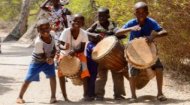

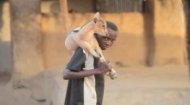
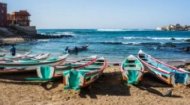
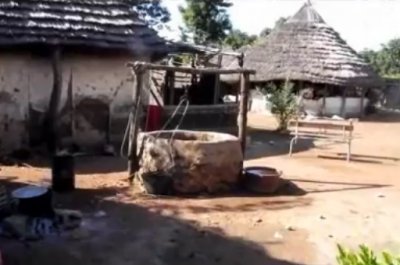
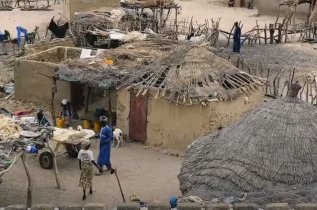 Only 38% of rural homes have access to electricity, compared to 88% in urban areas although rising across the country in general. Some villages will have their own mosque and most villages will have a borehole from which water is collected. However many of these have been overexploited and in some areas, such as Mont Rolland, villagers have to drill down over 260 feet to reach water supplies. For others, it's a matter of taking a donkey and cart if even further afield. The lack of fresh, safe water coupled with poor sanitation in Senegal contributes to the high risk of waterborne diseases such as bacterial and protozoal diarrhoea, hepatitis A and typhoid fever as well as schistosomiasis that make children in Senegal more likely to fall ill and less likely to attend school and get an education and consequently have better life outcomes. Washing facilities are often communual in a freestanding, concrete building with two tin sides.
Only 38% of rural homes have access to electricity, compared to 88% in urban areas although rising across the country in general. Some villages will have their own mosque and most villages will have a borehole from which water is collected. However many of these have been overexploited and in some areas, such as Mont Rolland, villagers have to drill down over 260 feet to reach water supplies. For others, it's a matter of taking a donkey and cart if even further afield. The lack of fresh, safe water coupled with poor sanitation in Senegal contributes to the high risk of waterborne diseases such as bacterial and protozoal diarrhoea, hepatitis A and typhoid fever as well as schistosomiasis that make children in Senegal more likely to fall ill and less likely to attend school and get an education and consequently have better life outcomes. Washing facilities are often communual in a freestanding, concrete building with two tin sides. While the Senegal government is aware of the issue and has developed programs to promote water supply including building dams on the Senegal River to ensure an all round supply to those living in its basin and other innovative projects, the water situation in Senegal deteriorates the further north you go where the Sahara desert is slowly encroaching on former arable lands. This has led to people abandoning their land and moving south in search of secure water supplies. One such area is Ferlo which is now so arid that few can live there save for a few trees and goats. Others have left Senegal altogether by getting illegally into Europe through the Spanish enclaves in Morocco of Ceuta and Mellila (se chart below for these migrant detinations). But, as one would be migrant reflected "The smugglers at the Spanish-Moroccan border who we trusted ripped us off and abandoned us to our fate. So, the only choice we had was to get in, by force, or go back home and become the butt of jokes."
While the Senegal government is aware of the issue and has developed programs to promote water supply including building dams on the Senegal River to ensure an all round supply to those living in its basin and other innovative projects, the water situation in Senegal deteriorates the further north you go where the Sahara desert is slowly encroaching on former arable lands. This has led to people abandoning their land and moving south in search of secure water supplies. One such area is Ferlo which is now so arid that few can live there save for a few trees and goats. Others have left Senegal altogether by getting illegally into Europe through the Spanish enclaves in Morocco of Ceuta and Mellila (se chart below for these migrant detinations). But, as one would be migrant reflected "The smugglers at the Spanish-Moroccan border who we trusted ripped us off and abandoned us to our fate. So, the only choice we had was to get in, by force, or go back home and become the butt of jokes."


